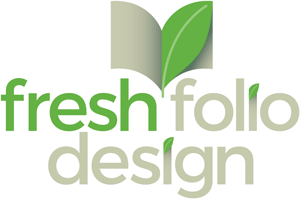There’s a minute left on the clock… your team is down 3 points… the ball is snapped to the quarterback, who fakes left and then grapevines to the right and hands you the football. What do you do?
OK, clearly I’m not so savvy on the inner workings (or terminology) of sports, but I’m trying to set an energetic tone for today’s topic: Project Hand Off.
For the past few weeks we have been sharing the elements involved in creating a strong brochure. All of those factors; from hierarchy to file prep are under the umbrella of what we would call Full Service Design.
This is when a designer works with a client all the way from concept to finished brochure; overseeing the project through each phase and addressing any issues that come up.
However, at some point you may find yourself involved with a project that was started by someone else. Of course, as a young designer, when you are in school learning about composition and concepting, your picture of what it will be like in the “real world” usually involves you taking a project from start to finish.
Alas, as with many of our visions of our future, our expectations and reality can differ considerably.
For example, when a kid daydreams about moving out of their parent’s house, rarely do they consider all the realities of adult responsibilities. (I’m looking at you laundry and housework.)
In order to better prepare you for this possibility (taking on a design project midstream, not moving out), we are going to discuss how to navigate a project started by another designer. We call that Support Design. Rather than designing the project entirely yourself, you are filling in at some point along the way.
As a designer, you need to know what type of questions to ask so that you can successfully deliver your portion of the project. We’d like to share questions we ask our clients when taking on this kind of job.
Now, these questions are related specifically to receiving a project in process. Aside from the questions we share below, there should be a project brief explaining the overall goals plus details on how the brochure will be used, specifics about the audience you are trying to reach, etc. All of the questions you would generally ask when doing Full Service Design should still be asked, but there are some additional things to consider when being asked to step into a project already in progress.
Why the handoff?
Understanding what preceded your involvement with a project can be helpful and may inform how you move forward. For example, sometimes a designer gets swamped with other deadlines necessitating that the project be outsourced. In those cases, your role may be to carry through what they had started, adhering to the original work that had been done.
However, if the original designer was struggling with the project (it happens to everyone at some point) or didn’t feel equipped to address a portion of the project, then you may need to assess whether it makes sense to continue in the direction of the initial designer, or if more dramatic adjustments need to be made to serve the overall project.
I’ve had many projects where another designer created a cover to the workbook or magazine, but did not feel equipped to design the interior.
A cover usually involves a primary concept or idea, while an interior needs to serve a large amount of content while also mindful of additional elements like page footers and helping to navigate a reader through the material. It is absolutely possible to do both, but some designers can find designing large projects a daunting task.
In those cases, it’s a good idea to approach what has been done through the filter of your final audience. You don’t want the design to feel disconnected or jarring when they move from one section to another. However, you also don’t want to compromise the final result by keeping elements that just don’t serve the brochure.
What is the current status?
In order to determine what your contribution will look like, it is important to know what is currently on track for the project and which areas need specific attention.
While you are entering this project “mid-stream”, the client has been there from the beginning. They know the original goals for the project and which parts of the work are fulfilling those goals.
When asking the client about the status of the project, they will most likely share what is on-track for the project and what they want you to address. It’s always a good idea to reflect back what you are hearing to ensure you are on the same page.
“So I’m hearing that the team is liking the direction of the photography and the fonts, but not loving the current color palette. Is that right?” Reflecting back what you are hearing is a simple way to clarify and understand what is expected of you. (Psst…it totally works in other conversations too!)
As the client answers the question about the current status, you should start to get a picture of what your contribution will look like. Are you providing a supporting role or is this more of a make-or-break scenario with you as the unassuming hero who saves the day? (This may be a bit over the top, but picture a film with Atticus Finch as total badass. I would absolutely go see that movie.)
How are you wanting to proceed?
Most likely the client has a picture of what is needed for the remainder of the project. In order to successfully accomplish your portion of the project, you want expectations to be clear, both for you and the client.
Listen to what they are needing from you, keeping in mind both the timeline and your skill set. Be honest with yourself (and the client) about what you can do. It’s always better to under-promise and over-deliver.
As you hear what the client is needing and review the work that has already been done, sometimes you may see red flags regarding the project. It is always best to voice these concerns with the client.
You don’t want to find yourself in the position of inheriting problems from another designer, or a faulty process, and having to force it through to completion; all the while cringing at the problems that you identified from the beginning.
Of course, the client may not agree with the concerns that you raise, which could result in you deciding the project isn’t a fit. Always listen to your gut. If you are seeing major problems and the client continues to ignore when you highlight them, then you are probably better off without that job.
It does take courage to speak up. It may feel awkward. But remember, they brought you in because they need your expertise, so don’t shy away from sharing your honest assessment.
Overview
Hopefully, this gives you a picture of what Support Design looks like, as well as questions to ask prior to taking on a project.
We have always enjoyed providing Support Design to our clients. It gives us opportunities to collaborate with other designers in ways that wouldn’t have been possible otherwise.
We’ve also found that it can help establish us with clients. Remember the hero scenario? When you are a part of saving the day for a client, they tend to appreciate that and keep you in mind for future opportunities.
However, it isn’t necessarily a fit for everyone. Some designers choose to only work on Full Service Design projects and that is absolutely fine. The most important thing is to be true to yourself and determine which type of service is most inline with your strengths and go all in on that.
If we can be of any help in talking through those options, please drop us a line. Or, if you’d like to hear more about these different approaches and how it could serve your project, check out our Services page.
Also, if you’d like to discuss questionable football terminology, just leave a comment…




Leave a Reply